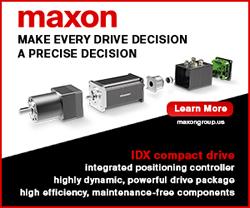Counting Photons…How Low Can You Go?
New program will plumb the fundamental limits of light detection to enable revolutionary new concepts, models and imaging devices
The process of detecting light—whether with our eyes, cameras or other devices—is at the heart of a wide range of civilian and military applications, including light or laser detection and ranging (LIDAR or LADAR), photography, astronomy, quantum information processing, medical imaging, microscopy and communications. But even the most advanced detectors of photons—the massless, ghostlike packets of energy that are the fundamental units of light—are imperfect, limiting their effectiveness. Scientists suspect that the performance of light-based applications could improve by orders of magnitude if they could get beyond conventional photon detector designs—perhaps even to the point of being able to identify each and every photon relevant to a given application. But is it even possible, within the laws of quantum physics, to definitively detect and identify every relevant photon—and to be confident that each detection signal is true and accurate?
DARPAs Fundamental Limits of Photon Detection—or Detect—program aims to establish the first-principles limits of photon detector performance by developing new fully quantum models of photon detection in a variety of technology platforms, and by testing those models in proof-of-concept experiments. A Special Notice was issued yesterday on FedBizOps (available at http://go.usa.gov/cnSCh) announcing an informational session for potential proposers to be held Jan. 25, 2016, in Arlington, Virginia.
"The goal of the Detect program is to determine how precisely we can spot individual photons and whether we can maximize key characteristics of photon detectors simultaneously in a single system," said Prem Kumar, DARPA program manager. "This is a fundamental research effort, but answers to these questions could radically change light detection as we know it and vastly improve the many tools and avenues of discovery that today rely on light detection."
Photons in the visible range fill at the minimum a cubic micron of space, which might seem to make them easy to distinguish and to count. The difficulty arises when light interacts with matter. A cubic micron of conventional photon-detection material has more than a trillion atoms, and the incoming light will interact with many of those atoms simultaneously. That cloud of atoms has to be modeled quantum mechanically to conclude with precision that a photon was actually there. And modeling at that massive scale hasnt been possible—until recently.
"For decades we saw few significant advances in photon detection theory, but recent progress in the field of quantum information science has allowed us to model very large and complicated systems," Kumar said. Advances in nano-science have also been critical, he added. "Nano-fabrication techniques have come a long way. Now not only can we model, but we can fabricate devices to test those models."
The Detect program aims to create a fully quantum model of photon detection and then carry out proof-of-principle experiments to validate those models. It will also study the differences between various photon detection technologies. Current photon detectors, such as semiconductor detectors, superconductor detectors, and biological detectors have various strengths and weaknesses as measured against eight technical metrics, including what physicists refer to as timing jitter; dark count; maximum rate; bandwidth; efficiency; photon-number resolution; operating temperature; and array size. There is currently no single detector that simultaneously excels at all eight characteristics. The fully quantum model developed and tested in Detect will help determine the potential for creating such a device.
"We want to know whether the basic physics of photon detection allows us, at least theoretically, to have all of the attributes we want simultaneously, or whether there are inherent tradeoffs," Kumar said. "And if tradeoffs are necessary, what combination of these attributes can I maximize at the same time?"
The Detect program will require expertise in a number of crosscutting disciplines, including quantum measurement theory and experimentation, quantum information science and technology, semiconductor physics, superconductor physics, biological physics and quantum biology, quantum-limited amplification, device and system design and engineering. Further information will be provided in a Broad Agency Announcement to be released on FedBizOpps in advance of the January 25 Proposers Day.
Featured Product

